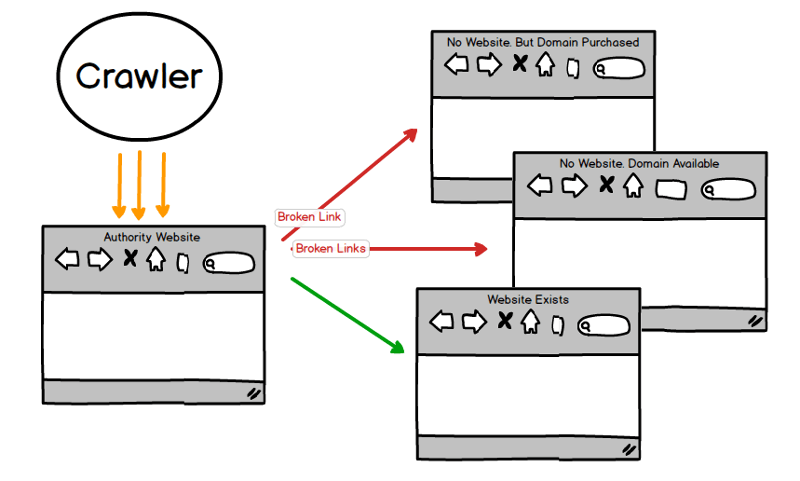All Categories
Featured
Table of Contents
- – Which Is The Leading Semantic Search Engine Re...
- – What Does Semantic Keyword Research Cost?
- – What Is The Leading Enhancing Seo With Semant...
- – How To Buy The Top Semantic Seo Best Practices
- – What Is The Most Reliable Semantic Seo Platf...
- – What Is The Most Reliable Semantic Content C...
- – What Is The Most Recommended Semantic Seo Co...
The web is transforming, becoming an increasing number of semantic. SEO is also altering and coming to be extra semantic. This is due to the fact that search engines have advanced and are moving a growing number of in the direction of reviewing content online. Obviously, that has also transformed the method we create web content, specifically if we desire to rank much better in the search engines.
Intertwingularity is not typically recognized, individuals maintain acting they can make things deeply ordered, categorizable and consecutive when they can not. Based on the partnerships between search intentions, the search engine prefers a web content in positioning by calculating the distance in between the vectors of significance.
It enables you to see, beginning from a subject, all the entities that belong to that subject. In this manner you can clearly see which entities/concepts/ideas have currently been covered on your web site, and you can find new chances by comprehending what material you can include and just how to produce it.
Which Is The Leading Semantic Search Engine Results Pages (Serps) Plan
It has the ability to make your material reasonable for internet search engine on the one hand and for your audience on the other. Structuring your material model highlights your content and its underlying connections to ensure that internet search engine can acknowledge you among thousands of items of info, making you a lot more noticeable to customers who satisfy the search intent relevant to your service.
In semantic SEO copywriting, an editor starts from a more comprehensive variety of topics and customizes the material to consist of semantically appropriate terms and expressions that assist visitors comprehend a subject, comparable to checking out material in a wiki. From a web content composing viewpoint, one practical way to do this is to create a vocabulary of terms and questions surrounding your target topic.
What Does Semantic Keyword Research Cost?
Find out more concerning by watching the by!.

Semantic search describes the process of just how online search engine recognize and match key words to a searcher's intent in natural search results page. Prior to semantic search, online search engine like Google operated like matchmakersaligning details words in your query with those specific words on pages. The outcomes were straightforward but usually lacked depth.
What Is The Leading Enhancing Seo With Semantics Service In My Area?
It makes it possible for Google to provide quick, accurate responses to look inquiries about real-world topics. When you kind a query word right into Google, you're not just going into a series of words.
When you search for "Apple," Google does not simply see a word that describes a fruit. It acknowledges Apple as a company and can give relevant info. It was Google's answer to the surge of voice searches, where queries came to be more conversational and nuanced.
How To Buy The Top Semantic Seo Best Practices
By integrating NLP, Hummingbird permitted Google to relocate past mere keyword matching. It assisted the online search engine comprehend search intent, increasing the odds that results would properly match the reason behind an individual's search. As the third crucial ranking factor after web content and web links, RankBrain has actually enhanced Google's semantic search capacities to recognize the significance of search queries.
RankBrain is an artificial intelligence system that assists Google analyze queries it hasn't seen before. It can make assumptions about words and expressions it does not acknowledge and filter results accordingly. Making it a lot more effective at managing never-before-seen search inquiries. RankBrain thinks about more than just key phrases when evaluating a search inquiry.
So it brings outcomes that match the keywords and line up with the overall intent of giving young puppy training advice. And if the customer often browses for dog-related material, Google could prioritize more in-depth training guidesrecognizing the user's recurring interest in the subject. Integrating technologies like the Understanding Graph, Hummingbird, and RankBrain, semantic search assists the Google formula interpret and connect data throughout a huge web of information.
What Is The Most Reliable Semantic Seo Platform You Can Buy
The emphasis changes from keyword option to an all natural technique encompassing customer intent, topical significance, and overall customer experience. Developing web content that attends to the searcher's needs with comprehensive information can boost your SERP rankings.
And kind of web content can best satisfy their requirements. A broader technique to material aligns better with semantic search's change away from specific search phrase matching and towards customer intent. Which discusses the enhanced concentrate on topic collections, instead of individual key phrases. Material that covers search queries much more thoroughly not only pleases customers.
And five times higher than sites that take 10 secs to lots. While technical search engine optimization makes sure optimal internet site performance and availability, concentrating on user experience (UX) takes it a step even more. UX intends to create a visually attractive, easy to use user interface with appealing, high quality content that motivates visitors to stay. Semantic search technology makes it possible for search engines to aim for results that supply the very best feasible UX.
What Is The Most Reliable Semantic Content Creation For Your Money

All showcase Google's capacity to address a subject query comprehensively. By recognizing the context and intent behind user queries, search engines can provide much more appropriate info and possibly raise user engagement. Personalization in search results page produces far better UX.Based on your previous search background and preferences as a customer, semantic search helps browse engines tailor the results to match your unique demands and rate of interests.
So it brings outcomes that match the keywords and line up with the general intent of offering puppy training guidance. And if the user often looks for dog-related material, Google might prioritize extra comprehensive training guidesrecognizing the customer's ongoing rate of interest in the topic. Combining technologies like the Knowledge Chart, Hummingbird, and RankBrain, semantic search helps the Google formula translate and link information throughout a substantial internet of info.
What Is The Most Recommended Semantic Seo Content Analysis Today
The emphasis changes from keyword choice to an alternative strategy including individual intent, topical relevance, and overall user experience. Developing web content that deals with the searcher's needs with comprehensive info can boost your SERP rankings.

A wider approach to material aligns much better with semantic search's shift away from specific keyword matching and toward individual intent. Material that covers search queries a lot more thoroughly not only pleases individuals.
UX intends to produce a visually attractive, easy to use interface with interesting, top quality material that encourages visitors to remain. Semantic search technology enables search engines to aim for results that provide the finest feasible UX.
All display Google's ability to address a subject query adequately. By comprehending the context and intent behind user questions, online search engine can provide more pertinent info and possibly increase customer interaction. Personalization in search engine result produces much better UX.Based on your previous search background and preferences as a customer, semantic search aids online search engine customize the results to fit your unique demands and rate of interests.
Table of Contents
- – Which Is The Leading Semantic Search Engine Re...
- – What Does Semantic Keyword Research Cost?
- – What Is The Leading Enhancing Seo With Semant...
- – How To Buy The Top Semantic Seo Best Practices
- – What Is The Most Reliable Semantic Seo Platf...
- – What Is The Most Reliable Semantic Content C...
- – What Is The Most Recommended Semantic Seo Co...
Latest Posts
Who Is The Most Reliable Tools For Semantic Seo In My Area
What Is The Leading Optimizing For Semantic Search Business?
Is It Worth Paying For Semantic Seo Platform?
More
Latest Posts
Who Is The Most Reliable Tools For Semantic Seo In My Area
What Is The Leading Optimizing For Semantic Search Business?
Is It Worth Paying For Semantic Seo Platform?